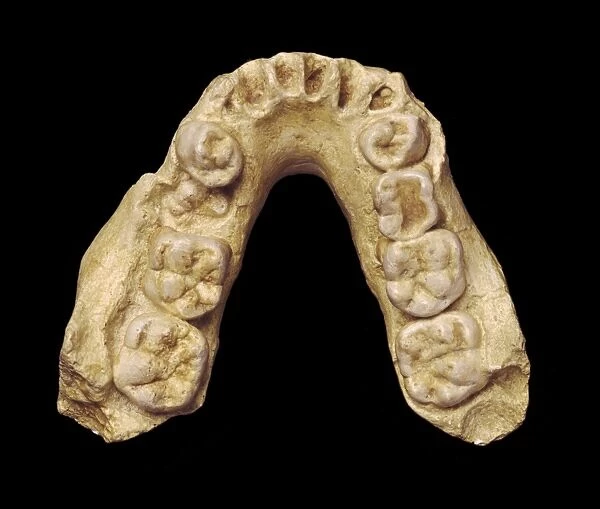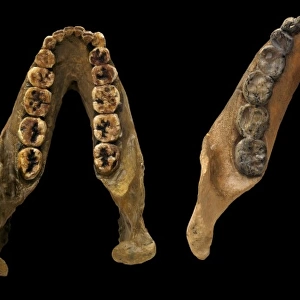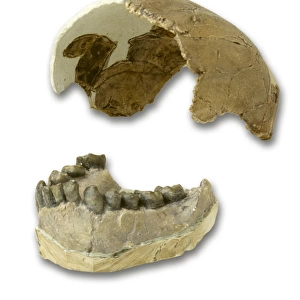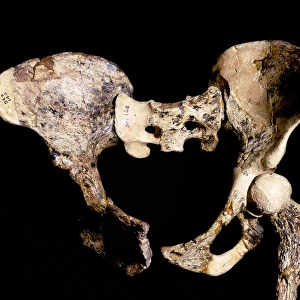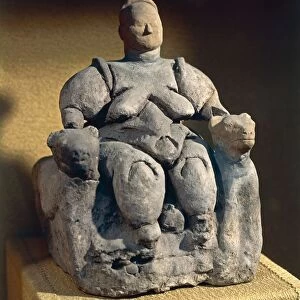Australopithecus africanus mandible (MLD 2)
![]()

Wall Art and Photo Gifts from Mary Evans Picture Library
Australopithecus africanus mandible (MLD 2)
Mandible and teeth of an adolescent male (of about 12 years) Australopithecus africanus discovered at Makapansgat by A.R. Hughes and S. Kitching in July 1948. It dates back to around 2.5 million years before present
Mary Evans Picture Library makes available wonderful images created for people to enjoy over the centuries
Media ID 8581573
© Mary Evans Picture Library 2015 - https://copyrighthub.org/s0/hub1/creation/maryevans/MaryEvansPictureID/10710017
Africanus Anthropological Anthropology Australopithecine Australopithecus Australopithecus Africanus Bone Epitheria Eutheria Great Ape Haplorhini Hominid Hominidae Hominini Hominoid Hominoidea Jaw Bone Jawbone Mammalia Mandible Placental Mammal Primates
EDITORS COMMENTS
This print showcases the fossilized mandible and teeth of an adolescent male Australopithecus africanus, discovered at Makapansgat, South Africa, in July 1948. The remains, now referred to as MLD 2, were unearthed by archaeologists A.R. Hughes and S. Kitching. Dating back approximately 2.5 million years before present, this discovery offers invaluable insights into our early hominid ancestors. Australopithecus africanus, a crucial link between apes and humans, is classified as a great ape, a mammal, and a member of the Hominidae family. This specific specimen, with its well-preserved jawbone, provides essential information about the anatomy and evolution of the hominid jaw. The Australopithecus africanus mandible is characterized by its prominent chin, a feature not present in modern apes. This adaptation may have been crucial for the development of speech in early hominids. The teeth, displaying a mix of deciduous and permanent teeth, indicate that this individual was around 12 years old at the time of his death. The discovery of MLD 2 at Makapansgat, a site rich in hominid fossils, has significantly contributed to our understanding of early hominid evolution. This print is a testament to the ongoing research and exploration into the fascinating world of anthropology and anatomy, offering a glimpse into the lives of our ancient ancestors.
MADE IN THE USA
Safe Shipping with 30 Day Money Back Guarantee
FREE PERSONALISATION*
We are proud to offer a range of customisation features including Personalised Captions, Color Filters and Picture Zoom Tools
SECURE PAYMENTS
We happily accept a wide range of payment options so you can pay for the things you need in the way that is most convenient for you
* Options may vary by product and licensing agreement. Zoomed Pictures can be adjusted in the Cart.

